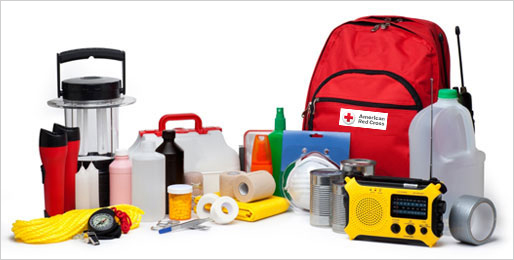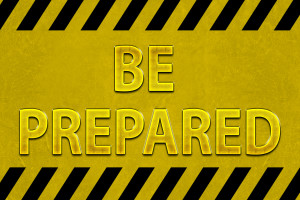Preparing for an Emergency or Disaster
 The lives we live are often full of surprises, for better or worse. The most nerve wracking fact about this situation is that we cannot see what is just around the bend before it is too late. This is what happens to families when they are hit with a disaster that can turn their lives upside down.
The lives we live are often full of surprises, for better or worse. The most nerve wracking fact about this situation is that we cannot see what is just around the bend before it is too late. This is what happens to families when they are hit with a disaster that can turn their lives upside down.
However, just because you can’t see these disasters coming, doesn’t mean that you can’t be prepared for them when they do. Preparing for the worst is a great way to ensure that your family is protected from whatever emergency can pop up in your life, or at least as protected as they could have been. Here are some tips for preparing for an emergency or disaster.
Keep a 72-hour kit
If a natural disaster or some other large-scale freak accident occurs in your neighborhood, there are several immediate threats to the safety of you and your family, depending on what the emergency is.
However, each of these possibilities will have a common denominator: the infrastructure around you will likely be damaged or destroyed. This means that you’ll have to survive off of what you already have in your home, without heat or power. This is why it is highly recommended that you have a 72-hour kit at the ready in your home. A 72-hour kit must contain food, water, blankets, and a first aid kit.
Typically, in these kits, you want to supply them with enough food and water for each person and pet to last 3 days. However, it is ideal that you plan these kits to last longer than 72-hours.

When it comes to packing these kits with food, the right type of food to pick is very important. Obviously, don’t have any disposable food in your emergency kit, as you want it to last as long as it can without getting stale or rotten.
However, it’s also important to avoid salty food, as this will increase the need to drink water, which may or may not be a scarce commodity, at the moment. Also be certain to take special diet considerations into account with the people in the home, such as if anyone is diabetic.
Designate a safe place
One of the scariest moments for anyone during a disaster is right after it strikes, when you don’t know where your family and loved ones are, and if they are safe. You want to get past this initial period of fear and disorientation, and you need to make sure the people you love are safe.
For this reason, it is incredibly important to set up a designated safe space for your family to meet at, in the case that a disaster ever happens. Make sure the safe space is a place that everyone will be able to remember, and make sure it is somewhere that is easy to get to, even if things around it are destroyed.
Be prepared, financially
Aside from the initial danger that an emergency or disaster can have on your life, there is the residual financial damage that is likely to linger in your life. Although there are many insurance plans that can assist with this situation, there is still likely to be a huge financial impact that a disaster can have on your family.
This is why it always pays to be prepared for these unknowable situations. The amount that you should set aside in an emergency fund can vary, depending on your current lifestyle. It’s universally considered a good idea to set aside three months of general expenses towards this fund. However, an additional fund to take care of insurance premiums may also be a good idea.
There is actually a lot to say on the subject of finances and emergencies. For more information, check out this post here.
Category: Family Finances




